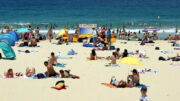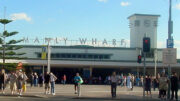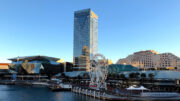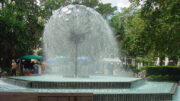As more people came to live in Australia, many European farmers set up farms that struggled due to the droughts and other environmental conditions that they weren’t familiar with in Europe.
Despite this, the arrival of Governor Lachlan Macquarie in 1809 brought many more settlers, many of them wealthy, the city was well established by the 1820s with most of its buildings built by the convicts. The convict transportation stopped in 1840 and by 1847 the convicts only accounted for 3 percent of the population.
The 1850s saw the population of Australia skyrocket thanks to the Gold that was discovered across the new state of Victoria, although many of Sydney’s residents moved to Victoria to catch gold fever, Sydney’s population steadily improved.
The Federation of Australian occurred on the 1st of January in 1901 and the Commonwealth of Australia was declared in a ceremony in Centennial Park. It was planned that Melbourne would be the temporary Australian capital city until the new Australian capital city of Canberra was built.
As with many other cities around the world after the First World War, the economy of Sydney went into rapid decline, creating the Great Depression with over a third of Sydney’s population unemployed. Many large city projects were undertaken around this time, like the building of the underground railways and Sydney Harbour Bridge. By 1932 when the bridge opened and wool prices increased the economy was soon back on track.
World War Two saw the city used as a major port for the navies of allied forces, with many visiting foreign sailors returning after the war to make the city their new home. Despite a small attack by some Japanese midget submarines in 1942, the city was untouched by the war that decimated parts of Europe.
Sydney grew rapidly during the 50s and 60s, its second most popular landmark the Sydney Opera House was completed in 1973 after 14 years of construction. At this time, the construction of Sydney Tower (the second-tallest tower in the Southern Hemisphere) was well underway, with the tower being opened to the public in 1981.
The late 80s and the 1990s were a construction boom time in the city, the once industrial area known as Darling Harbour was transformed into an entertainment area and the first section was opened along with a monorail in time for Australia’s bicentennial in 1988.
Much development has occurred around the Darling Harbour area, especially leading up to the 2000 Olympics, when the whole world’s eyes were focused on one of Australia’s most beautiful and cosmopolitan cities.




